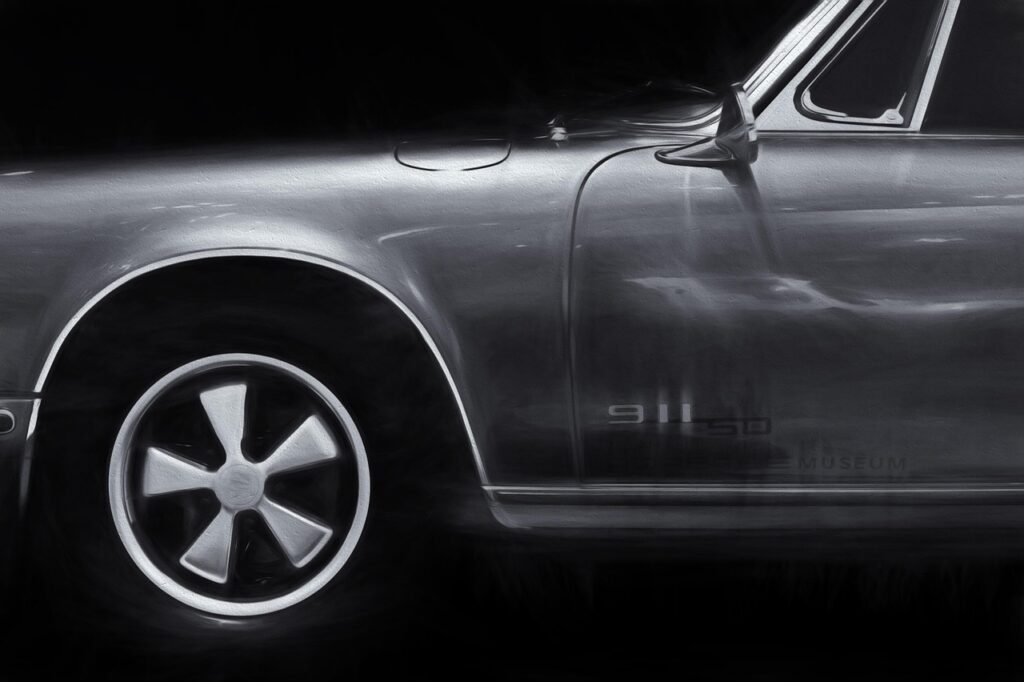
Sean Connery, a name synonymous with unparalleled sophistication and enduring charisma, transcended the silver screen to embody a lifestyle of impeccable taste, a significant facet of which was his profound appreciation for exceptional automobiles. More than mere modes of transport, the cars associated with Connery, whether from his personal garage or famously driven as James Bond, became extensions of his legendary persona: precise, timeless, and undeniably cool. His discerning eye for both performance and classic design created an automotive legacy as compelling as his filmography.
Indeed, Connery’s affinity for fine machinery was not simply a hobby; it was a defining characteristic. His car collection, valued at over $1.6 million, was renowned not for its sheer quantity but for the unparalleled character and craftsmanship of each vehicle. According to a study by MoneyBarn, Sean Connery proudly boasted the flashiest car collection among all James Bond actors, a testament to his unique blend of opulence and discernment. This collection, much like the man himself, spoke volumes about an appreciation for quality, heritage, and an aspirational way of life.
As we embark on a journey through some of the most iconic vehicles to have graced Connery’s life and career, we uncover stories of cinematic legend, personal passion, and a commitment to enduring style. Each car serves as a window into the evolution of an icon, from the thrilling escapades of 007 to the quiet dignity of his personal acquisitions, all meticulously chosen to reflect a man who truly understood the art of living well.
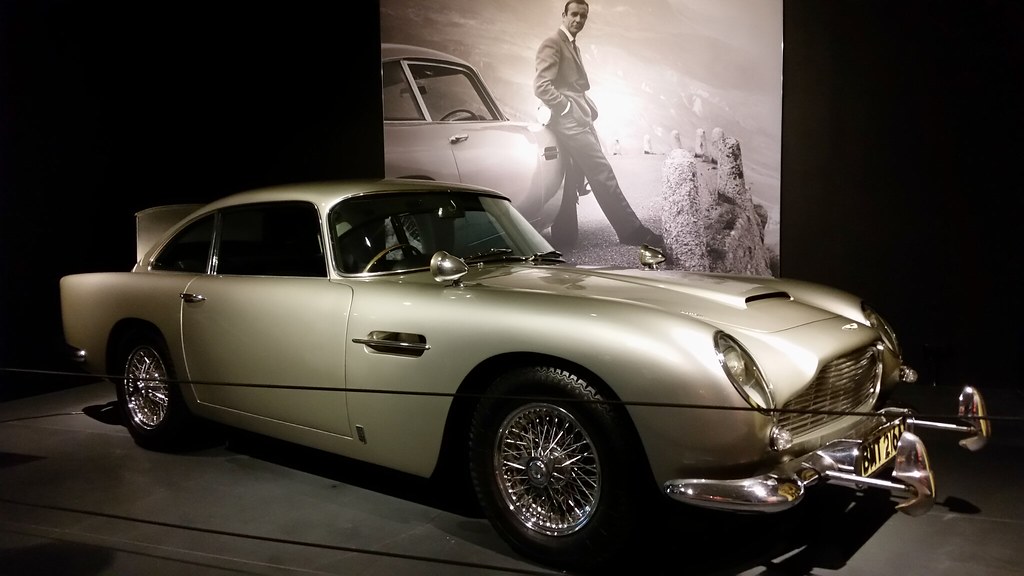
1. **The 1964 Aston Martin DB5: The Quintessential Icon**To speak of Sean Connery and the Aston Martin DB5 is to invoke a partnership so seamless, so perfectly matched, that it exists as an almost mythical confluence of man and machine. Introduced in the landmark film *Goldfinger* in 1964, the DB5 instantly became an undisputed global icon, cementing its place as one of the most famous film cars in cinematic history. Its sleek lines, powerful stance, and the array of sophisticated gadgets designed by Q, made it more than just a car; it was a character in itself, perpetually linked with the suave and lethal charm of James Bond.
Decades after making the DB5 synonymous with 007, Connery finally brought one home, purchasing his own model in 2018. It was a beautiful full-circle moment for the legend, acquiring a symbol of his most iconic role. This particular DB5, a cherished possession of the actor, was meticulously restored by RS Williams, a renowned UK-based Aston Martin specialist. His son, Jason Connery, poignantly shared that this car was one of his father’s most cherished possessions, underscoring its profound personal significance beyond its on-screen fame.
Underneath its timeless aluminum body, the 1964 Aston Martin DB5 was a marvel of British engineering, boasting a 282 hp, 4-liter straight-six engine. This powerhouse propelled it from zero to 60 mph in a swift 8 seconds, reaching an impressive top speed of 145 mph. While standard models certainly offered exhilarating performance, the cinematic version was famously outfitted with a suite of ingenious features including revolving license plates, a bulletproof windshield, hidden machine guns, and, of course, the infamous passenger-side ejector seat, all of which captivated audiences worldwide and set a new standard for on-screen automotive gadgetry.
The DB5’s indelible mark on popular culture extended beyond *Goldfinger*, reappearing in *Thunderball* with Connery, and subsequently in a host of other Bond films even after his tenure. The car’s enduring appeal is so strong that Aston Martin has even produced 25 examples of its DB5 Goldfinger Continuation series, authentic replicas complete with the film’s tradecraft accouterments, for a cool $3.6 million. This continuing legacy, alongside its estimated values ranging from $1.2 million to $3.5 million, solidifies its status as a timeless masterpiece.
Following Connery’s passing, his beloved DB5 was auctioned in 2022 for an astounding $2.4 million, with the proceeds dedicated to charity through the Sean Connery Foundation. This act transformed the vehicle from merely a classic car into a profound symbol of his enduring legacy, both in the annals of cinema and in the real world, touching lives long after its original owner had departed.
Car Model Information: 2021 Lexus GX 460 Base
Name: Aston Martin DB5
Manufacturer: Aston Martin
Production: 1963–1965 (1,059 units),2020 (25 units)
Assembly: Newport Pagnell,England
Designer: Carrozzeria Touring Superleggera
Class: Grand tourer
BodyStyle: coupé
Layout: Front-engine, rear-wheel-drive layout
Engine: DOHC,Straight-6,3995 cc
Order: flip
Abbr: on
Powerout: convert
Transmission: ZF Friedrichshafen
Length: 4570 mm
Width: 1680 mm
Wheelbase: 98.0 in
Predecessor: Aston Martin DB4
Successor: Aston Martin DB6
Doors: 2
Weight: 3311 lb
Sp: uk
Categories: Articles with short description, Aston Martin vehicles, CS1: unfit URL, Cars discontinued in 1965, Cars introduced in 1963
Summary: The Aston Martin DB5 is a British grand tourer (GT) produced by Aston Martin and designed by Italian coachbuilder Carrozzeria Touring Superleggera. Originally produced from 1963 to 1965, the DB5 was an evolution of the final series of DB4. The “DB” designation is from the initials of David Brown who built up the company from 1947 onwards.
The DB5 is best-known for its role in the James Bond films. It was first driven by the fictional spy in the film Goldfinger (1964). In 2013, the car featured on a “British Auto Legends” postage stamp issued by the Royal Mail.
Get more information about: Aston Martin DB5
Buying a high-performing used car >>>
Brand: Aston Martin Model: DB5
Price: $44,105 Mileage: 50,292 mi.
Read more about: The 13 Most Beautiful Sports Cars Ever Designed: A Masterclass in Automotive Art and Engineering

2. **The 1960s Jaguar E-Type: A Personal Statement of Refined Sportiness**The Jaguar E-Type, a design icon of its era, held a special place in Sean Connery’s personal collection, a testament to his appreciation for beauty, speed, and quintessentially British engineering. With its sleek, elongated form, smooth, flowing curves, and an unmistakably elegant profile, the E-Type was, and remains, a breathtaking automobile. Connery’s version was reportedly finished in the classic British Racing Green, complemented by a luxurious tan leather interior, a combination that spoke volumes about his refined yet undeniably sporty taste.
Connery added this magnificent machine to his private garage during his ascendancy to global stardom, a period when his image as James Bond became almost indistinguishable from the world of fast, stylish, and powerful cars. While it never graced the silver screen alongside him as Bond’s official ride, the E-Type was a perfectly fitting possession for a man who, perhaps more than any other actor, made the act of driving look effortlessly cool. It resided in the garage of a true connoisseur, reflecting an understated yet profound appreciation for automotive excellence.
Interestingly, the E-Type came tantalizingly close to becoming Connery’s Bond car in *Goldfinger*. Producers had considered it as a primary option before ultimately deciding on the Aston Martin DB5, believing the latter’s more robust and “gadget-ready” persona better suited the sophisticated spy. Despite this cinematic divergence, Connery’s fondness for the E-Type remained unwavering, leading him to acquire one for his personal enjoyment. This particular model, which also made an appearance in the movie *Woman of Straw*, further highlights its classic film credentials.
His choice of the E-Type underscores a key aspect of Connery’s personal style: a preference for vehicles that balanced raw performance with an undeniable sense of class. Much like Connery himself, the E-Type exudes an aura of sophisticated power, a car that could both thrill on the open road and turn heads with its sheer aesthetic brilliance. Its enduring appeal is mirrored in the fact that other notable figures, such as Harry Styles, have also been drawn to its timeless design.
Car Model Information: 1971 Jaguar E-Type Restomod
Sp: uk
Name: Jaguar E-Type
Caption: 1961 E-Type Series 1 3.8-Litre, the first production model of this open two-seater
Aka: Jaguar XK-E , Jaguar V-12
Manufacturer: Jaguar Cars
Production: 1961–1974
Class: Sports car
Predecessor: Jaguar XK150
Related: Jaguar D-Type,Jaguar XJ13
Successor: Jaguar XJS
Layout: FMR layout
Assembly: Coventry,England
Designer: Malcolm Sayer
Categories: 1970s cars, 2+2 coupés, All articles with dead external links, All articles with specifically marked weasel-worded phrases, All articles with unsourced statements
Summary: The Jaguar E-Type, or the Jaguar XK-E for the North American market, is a British front mid-engined sports car that was manufactured by Jaguar Cars Ltd from 1961 to 1974. Its sleek appearance, advanced technologies, high performance, and competitive pricing established it as an icon. The E-Type’s claimed 150 miles per hour (240 km/h) top speed, sub-7-second 0 to 60 mph (97 km/h) acceleration, largely unitary body construction, front and rear independent suspension with disc brakes, mounted inboard at the rear, and rack-and-pinion steering spurred industry-wide changes.
The E-Type was based on Jaguar’s D-Type racing car, which had won the 24 Hours of Le Mans for three consecutive years beginning in 1955.
The E-Type employed what was, for the early 1960s, a novel design principle, with a front subframe carrying the engine, front suspension and front bodywork bolted directly to the body tub. No ladder frame chassis, as was common at the time, was needed and as such the first cars weighed only 1,315 kg (2,899 lb).
It is rumored that, on its debut on 15 March 1961, Enzo Ferrari called it “the most beautiful car ever made”, but this statement is not fully confirmed. In 2004, Sports Car International magazine placed the E-Type at number one on their list of Top Sports Cars of the 1960s. In March 2008, the Jaguar E-Type ranked first in The Daily Telegraph’s online list of the world’s “100 most beautiful cars” of all time.
Get more information about: Jaguar E-Type
Buying a high-performing used car >>>
Brand: Jaguar Model: E-Type
Price: $64,900 Mileage: 2,455 mi.
Read more about: The Untamed Roads: Iconic Machines That Defined the 60s and 70s Automotive Golden Era

3. **The 1960s Jensen CV8: An Early Reflection of Success and Distinctive Taste**The Jensen CV8, with its distinctive and rather bold aesthetic, offered a striking counterpoint to the more conventional automotive designs of its era. Featuring a pronounced front grille, elegantly sloped lines, and an innovative fiberglass body, it was a car that confidently stood out. The interior was a sanctuary of luxury, meticulously refined with plush leather seats and rich wood veneer, providing a grand touring experience perfectly suited for a man whose reputation was rapidly expanding across the globe.
Connery acquired this compelling vehicle second-hand in the early 1960s, a pivotal period directly following his breakout success as James Bond. At this point in his career, he hadn’t yet entered the realm of acquiring brand-new, bespoke vehicles typically associated with the rich and famous. Yet, his choice of the Jensen CV8 was telling; he deliberately opted for something powerful, inherently rare, and distinctively British, signaling an early appreciation for unique engineering and an aversion to the merely ostentatious.
This car is arguably one of the most reflective of Connery’s burgeoning success and his personal ethos. It wasn’t about flashy displays of wealth, but rather a preference for something genuinely special and deeply personal. Friends from that period fondly recall his pride in the Jensen, precisely because it offered a unique statement without succumbing to overt showmanship. He was reportedly quite hands-on with this vehicle, often choosing to do much of the driving himself, even during the rigorous demands of press tours, showcasing his genuine passion for the driving experience.
The Jensen CV8 was later sold privately, and unlike some of his more publicised vehicles, it was not restored for grand public auctions or displays. This adds a certain mystique to its current whereabouts and trajectory, further cementing its status as a private, cherished piece of Connery’s early automotive history. It truly captures a moment in time when Connery was evolving into the cultural icon we remember today, with a car that perfectly mirrored his unique journey.
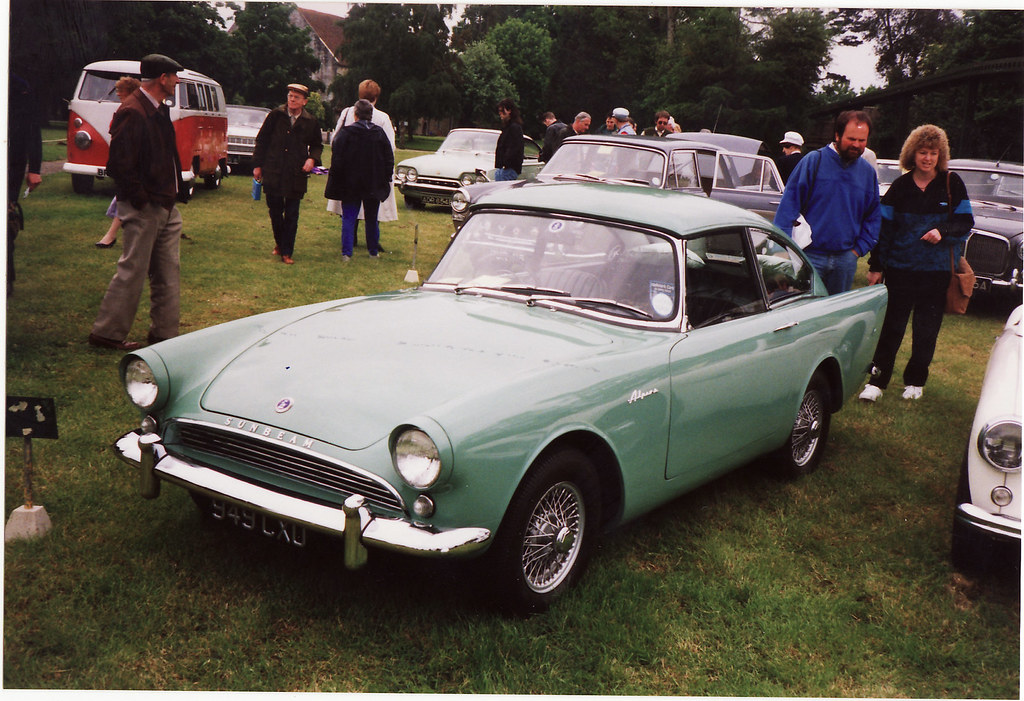
4. **The 1961 Sunbeam Alpine Series II: The Humble Genesis of Bond’s Automotive Escapades**Before the sophisticated gadgetry and the roaring power of an Aston Martin became synonymous with Agent 007, James Bond’s very first on-screen vehicle was a far more understated, yet utterly charming, machine: the humble, powder-blue 1961 Sunbeam Alpine Series II. In *Dr. No* (1962), the inaugural film of the iconic franchise, Sean Connery’s Bond embarks on a scenic, if perilous, spin through the sun-drenched Jamaican countryside in this unassuming two-seater.
This choice of vehicle, steeped in a charming anecdote, was less about strategic branding and more about practical necessity. The film’s production, operating on a modest budget of less than $1 million, simply didn’t have the resources to procure a flashier, high-end ride. Consequently, the Alpine was ingeniously borrowed from a local resident during filming, becoming an accidental star in what would become one of cinema’s most celebrated series. There were no elaborate gadgets, no futuristic modifications—just Connery, the winding roads of Jamaica, and the quiet, confident intensity of the very first Bond car chase.
While certainly not glamorous by the standards that would soon follow, the Sunbeam Alpine played a pivotal role in establishing the tone for what would evolve into one of the most iconic and anticipated aspects of the Bond franchise: the car chases. It laid the groundwork for the high-octane pursuits to come, demonstrating Bond’s innate ability to handle any situation, with any vehicle, and emerge victorious. The scene where Connery famously escapes Dr. No’s henchmen by deftly driving the low-slung Sunbeam under a crane remains a classic moment, proving ingenuity could trump raw power.
The drop-top, gadget-free Alpine, with its baby-blue finish and white-walled tires, provided cinema-goers with an unhindered view of the nascent Bond in action, showcasing Connery’s undeniable screen presence and the effortless cool he brought to the character. It was a modest beginning, perhaps, but one that fundamentally shaped the automotive identity of a legend and set the stage for an extraordinary vehicular journey that would captivate audiences for decades.
Car Model Information: 1962 Sunbeam Alpine
Manufacturer: Rootes Group
Production: 1953–1975
Layout: FR layout
Designer: Roy Axe
Class: Sports car
BodyStyle: Fastback,coupé
Assembly: Ryton-on-Dunsmore,Warwickshire,England
Categories: 1960s cars, 1970s cars, All pages needing cleanup, Articles needing cleanup from January 2015, Articles with short description
Summary: The Sunbeam Alpine is a two-seater sports roadster/drophead coupé that was produced by the Rootes Group from 1953 to 1955, and then 1959 to 1968. The name was then used on a two-door fastback coupé from 1969 to 1975. The original Alpine was launched in 1953 as the first vehicle from Sunbeam-Talbot to bear the Sunbeam name alone since Rootes Group bought Clément-Talbot, and later the moribund Sunbeam from its receiver in 1935.
Get more information about: Sunbeam Alpine
Buying a high-performing used car >>>
Brand: Sunbeam Model: Alpine
Price: $16,500 Mileage: 77,977 mi.

5. **The 1967 Toyota 2000GT: A Tailored Masterpiece of East-West Collaboration**In *You Only Live Twice* (1967), Connery’s James Bond found himself chauffeured through the vibrant streets of Tokyo in one of the rarest and most distinctive Bond cars ever conceived: the 1967 Toyota 2000GT. This sleek, futuristic machine was Japan’s audacious answer to the established European sports car elite, and its appearance alongside Bond dramatically elevated Japan’s automotive profile on a global stage. What made this car truly legendary, however, was a detail born purely out of necessity, a testament to Connery’s imposing stature.
Originally a beautiful two-seat coupe, Toyota famously modified two prototypes into open-top roadsters specifically for the film. The reason? At 6’2″, Sean Connery simply couldn’t fit comfortably inside the hardtop version with the roof on. This unique adaptation, transforming a design challenge into an iconic cinematic moment, ensured Connery’s presence could be fully captured on screen, turning these custom-built convertibles into priceless artifacts of film history. Only 351 examples of the original coupe were ever produced, making the roadster versions exceptionally rare.
The 2000GT was a pinnacle of Japanese engineering and design, boasting a 150 hp, 2-liter straight-six engine that enabled a top speed of 135 mph. In the film, it was also equipped with an array of cutting-edge (for the time) onboard technologies, including closed-circuit television, two-way radios, and voice-controlled electronics, all operated by the beautiful Japanese SIS agent Aki. Bond, from the passenger seat, was undoubtedly enamored with its blend of performance and sophisticated gadgetry, echoing the very essence of 007’s world.
Connery’s direct involvement in the car’s custom creation adds an unparalleled layer of allure to the 2000GT, making it a truly unique piece in the Bond automotive pantheon. Its very existence as a roadster owes itself to him, solidifying its place in popular culture. Such is its enduring appeal that even current 007 actor Daniel Craig has openly declared the 2000GT as his favorite Bond car from the entire series. Furthermore, Connery himself would later own one of these magnificent machines, with an estimated value of $1.2 million, reinforcing his deep connection to this tailored masterpiece.
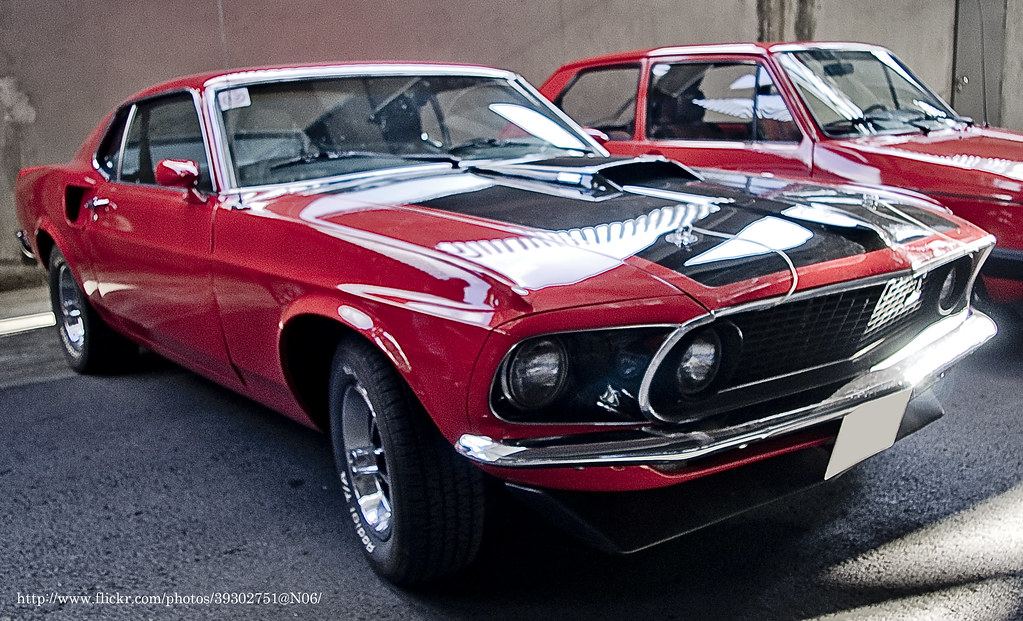
6. **The Ford Mustang Mach 1 (1970/1971): Bond’s American Muscle Moment**In a stylish departure from his usual British and European sophisticated machinery, Sean Connery’s Bond took the wheel of a formidable red 1971 Ford Mustang Mach 1 in *Diamonds Are Forever*. This muscular American icon became the centerpiece of one of Connery’s most memorable and visually spectacular chase sequences. Bond, with Tiffany Case as his passenger, tears through the vibrant streets of Las Vegas, masterfully evading police in a display of sheer automotive prowess and audacious stunt work.
The scene is perhaps best remembered for its now-famous alley stunt, where Bond miraculously squeezes the Mustang through a narrow passage by balancing on just two wheels. This daring maneuver captivated audiences and became an instant fan favorite, despite a humorous continuity error where the car inexplicably switches from being on its right side to its left side upon exiting the alley. Such a minor detail, however, did not detract from the sheer spectacle and enduring appeal of the sequence, which remains etched in Bond lore.
Beyond its cinematic exploits, the Mach 1 was a genuine powerhouse. Its muscular aesthetic, complete with twin ram-air intakes on the hood that were both a style icon and functional for boosting engine power, underscored its raw capability. Underneath, a beefy 370 hp, 429 Cobra Jet V-8 engine delivered jaw-dropping speed and performance. Several of these now-famous fastbacks were utilized during filming, and any surviving example today is undoubtedly worth far more than a few diamonds, testament to its legendary status among muscle car enthusiasts.
While Connery’s Bond was typically associated with the refined elegance of British automobiles, his command of the Mach 1 demonstrated his ability to handle American muscle with equal parts flair and precision. This particular vehicle, described as embodying freedom and sophistication, perfectly complemented Connery’s charismatic persona both on and off-screen. It’s no wonder he himself harbored an affinity for this classic, owning a 1970 Ford Mustang Mach 1 with an estimated value of $70,000, underscoring his broader passion for robust, high-performance machines that offered a thrilling driving experience. The Mach 1, with its ability to achieve 0-60 mph in just 5.7 seconds, continues to boast a cult following among petrolheads and collectors alike.
Car Model Information: 2021 Lexus GX 460 Base
Name: Ford Mustang Mach 1
Manufacturer: Ford Motor Company
Assembly: Dearborn, Michigan
Production: 1969–1978,2003–2004,2021–2023
Class: Muscle car
BodyStyle: coupe
Layout: FR layout
Categories: 1970s cars, 2000s cars, 2020s cars, All Wikipedia articles written in American English, All articles needing additional references
Summary: The Ford Mustang Mach 1 is a combination performance and appearance package offered as an option for the Ford Mustang.
It first appeared in August 1968 for the 1969 model year, and ran through 1978. After a long hiatus it briefly returned in 2003-2004, and most recently between 2021 and 2023.
The first generation of the package, available with various engines, debuted at its hottest, then was progressively eroded in performance as emissions controls, unleaded gas, fleet mileage quotas, and higher gasoline prices undercut the “horsepower wars” that had originally spurred the option. Similarly, early packages included other performance upgrades, such as suspension, that were deleted in subsequent model runs, leaving only a wide array of external and interior upgrades.
As part of a Ford heritage program, the Mach 1 package returned in 2003 as a high-performance version of the New Edge platform. Visual elements paying homage to the 1969 model were integrated into the design. This generation of the Mach 1 was discontinued after the 2004 model year, with the introduction of the fifth generation Mustang.
The Mach 1 returned again in 2021 in the sixth generation Mustang, offering marginally more power than the high-performance 5.0 L Coyote V-8 in the base GT V8, but borrowing front and rear subframes from the Shelby GT350 and various parts from it and the Shelby GT 500 models. It was produced until the debut of the seventh generation Mustang following the 2023 model year.
Get more information about: Ford Mustang Mach 1
Buying a high-performing used car >>>
Brand: Ford Model: Mustang Mach 1
Price: $44,105 Mileage: 50,292 mi.

7. **The Ferrari 275 GTB: A Masterpiece of Italian Engineering and Timeless Allure**Sean Connery’s ownership of a Ferrari 275 GTB stands as a remarkable chapter in both automotive history and the narrative of cinematic glamour. This iconic vehicle, a celebrated marvel of Italian engineering, perfectly encapsulated the very essence of sophistication and raw power that both the car and its esteemed owner exuded. Connery’s association with such a prestigious marque undoubtedly added an extra layer of allure and desirability to an already legendary automobile.
Produced between 1964 and 1968, the Ferrari 275 GTB was a groundbreaking machine, featuring a powerful V12 engine and sleek, aerodynamic lines that continue to captivate enthusiasts worldwide. Its design was both functional and exquisitely beautiful, making it one of the most sought-after classic cars among collectors. It represented the pinnacle of automotive artistry, blending performance with an aesthetic elegance that few cars could match.
As a known car aficionado, Connery reportedly cherished this magnificent vehicle for its thrilling performance capabilities as much as for its sheer aesthetic excellence. His discerning taste for quality, craftsmanship, and the driving experience was perfectly embodied by the 275 GTB. When this particular Ferrari went up for auction in 2017, it generated significant international attention, not only due to its pristine condition and rarity but largely because of its illustrious provenance and its connection to the legendary actor.
The sale of Connery’s Ferrari 275 GTB served as a powerful testament to his impeccable taste and his enduring influence on popular culture. It cemented the car’s status as a timeless symbol of sophistication, speed, and aspirational luxury, a fitting reflection of a man who lived life on his own terms, surrounded by objects of exceptional beauty and engineering. With an estimated value of $3,000,000, this Ferrari remains a crown jewel in the history of celebrity car collections, an embodiment of Connery’s unparalleled legacy.
Continuing our journey through the illustrious automotive world of Sean Connery, we discover further treasures that reflect his profound appreciation for engineering excellence, timeless design, and a lifestyle defined by sophistication. These vehicles, whether gracing the silver screen or residing in his private garages, each tell a story of a man who truly understood the art of living well, imbuing every choice with an aspirational quality that captivated audiences worldwide.
Car Model Information: 2021 Lexus GX 460 Base
Name: Ferrari 275,GTB, GTS, GTB/4, NART Spider
Caption: 1966 Ferrari 275 GTB Series II
Manufacturer: Ferrari
Class: Grand tourer
BodyStyle: unbulleted list
Production: unbulleted list
Wheelbase: 2400 mm
Abbr: on (alloy-bodied 275 GTB/C)
Weight: unbulleted list
Predecessor: Ferrari 250
Successor: unbulleted list
Layout: Front-engine, rear-wheel-drive layout
Engine: unbulleted list
Transmission: transaxle
Designer: unbulleted list
Categories: All articles with dead external links, All articles with unsourced statements, Articles with dead external links from April 2024, Articles with permanently dead external links, Articles with short description
Summary: The Ferrari 275 is a series of front-engined V12-powered grand touring automobiles with two-seater coupé and spider bodies produced by Ferrari between 1964 and 1968. The first 275 series cars were powered by a 3.3 L (3286 cc) overhead camshaft Colombo 60° V12 engine producing 260–320 hp (190–240 kW). An updated 275 GTB/4 was introduced in 1966, with a revised four overhead camshaft engine producing 300 hp (220 kW). The 275 series were the first road-going Ferraris equipped with a transaxle and independent rear suspension.
Pininfarina designed the 275 coupé and spider bodies, while Scaglietti designed the 275 GTS/4 NART Spyder, of which only 10 were made.
Motor Trend Classic named the 275 GTB coupé/GTS spider as number three in their list of the ten “Greatest Ferraris of all time”, and the 275 GTB/4 was named number seven on Sports Car International’s 2004 list of Top Sports Cars of the 1960s. In a September 1967 road test, Road & Track described the NART Spyder as “the most satisfying sports car in the world.”
Get more information about: Ferrari 275
Buying a high-performing used car >>>
Brand: Ferrari Model: 275 GTB
Price: $44,105 Mileage: 50,292 mi.
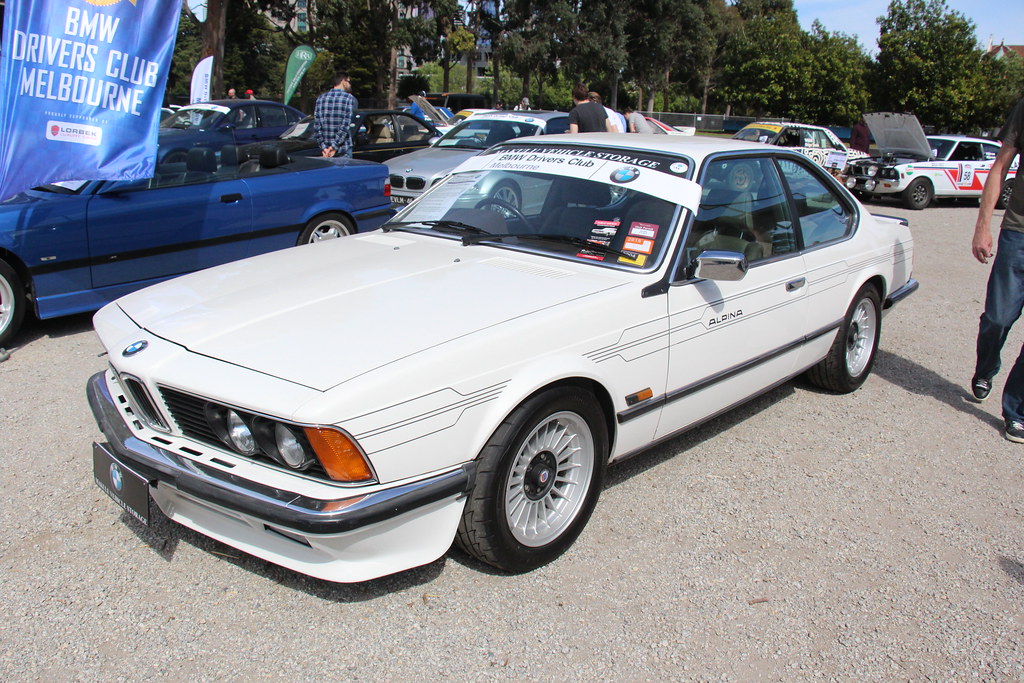
8. **The 1986 BMW E24 635CSi: Understated Elegance in Semi-Retirement**Even as Sean Connery gradually eased into semi-retirement, his discerning taste in automobiles remained as sharp as ever, leading him to acquire the elegant 1986 BMW E24 635CSi. This particular model, finished in a pristine Alpine White, presented a clean, understated silhouette that spoke volumes about its owner’s preference for quality without overt flamboyance. It was a sophisticated machine, designed for comfort and refined performance, perfectly suited for a life beyond the Hollywood glare.
The interior of Connery’s BMW was a sanctuary of modern luxury, equipped with plush leather seating and a dark-toned dashboard that provided a distinctly executive feel. This combination of comfort and understated style was characteristic of the luxury cars of the 1980s, offering a driving experience that was both engaging and supremely comfortable. It was an ideal vehicle for leisurely drives, allowing Connery to enjoy the finer nuances of motoring in a private, unhurried manner.
This BMW was reportedly kept at Connery’s residence in Marbella, Spain, a testament to his enjoyment of a Mediterranean lifestyle away from the bustling film sets. It represented a later addition to his celebrated collection, embodying a phase of life where he cherished personal enjoyment and relaxation. Its sale in 2021, fetching $56,892 at auction on The Market, further highlights the enduring appeal and value of cars associated with such an iconic figure.
The E24 635CSi, while not a Bond car, perfectly mirrored Connery’s personal journey during his later years: a blend of dignified living, continued appreciation for fine engineering, and a quiet confidence that permeated every aspect of his life. It symbolized a shift from the high-octane world of international espionage to the tranquil elegance of a well-deserved retirement, all without compromising on the quality and class that defined him.
Car Model Information: 2021 Lexus GX 460 Base
Name: BMW 6 Series
Manufacturer: BMW
Production: ubl
Class: Grand tourer
BodyStyle: coupé
Assembly: Karmann
Engine: ubl
Layout: Front-engine, rear-wheel-drive
Length: ubl
Width: 1725 mm
Abbr: on
Height: 1365 mm
Wheelbase: 2630 mm
Weight: convert
Predecessor: BMW E9
Successor: BMW 6 Series (E63)
Designer: Paul Bracq
ModelCode: E24
Categories: 1980s cars, All articles needing additional references, Articles needing additional references from May 2017, Articles with short description, BMW vehicles
Summary: The BMW E24 is the first generation of BMW 6 Series range of grand tourer cars, which was produced from January 1976 to 1989 and replaced the BMW E9 coupé.
The E24 was produced solely in a 2-door coupé body style. All models used petrol straight-six engines, with the majority (aside from the M635CSi/M6 model) using a version of the BMW M30 engine family. The E24 shared many parts with the E12 5 series, and in 1982 was updated with parts from the newly released E28 5 series.
The M635CSi is the first of the BMW M6 model line and is powered by the M88/3 straight-six engine. In North America, the vehicle is badged as “M6” and uses the less powerful BMW S38 engine.
The eventual successor to the nameplate, the E63 6 Series, was released in 2004 after a 16-year hiatus. Although the E31 8 Series was introduced as production of the E24 was ending, the 8 Series is considered a separate model line and therefore not a successor to the E24.
Get more information about: BMW 6 Series (E24)
Buying a high-performing used car >>>
Brand: BMW Model: E24 635CSi
Price: $44,105 Mileage: 50,292 mi.

9. **The 1964 Ford Galaxie 500: A Brief, Explosive Cinematic Role**While not a vehicle driven by Bond himself, the Ford Galaxie 500 secured a notable, albeit brief, cinematic moment in the 1964 classic *Goldfinger*. This unassuming American sedan, chosen primarily for its availability and size rather than its inherent flair, became indelibly linked with Connery’s Bond through one of the franchise’s early, memorable sequences. It played a crucial role, albeit a supporting one, in establishing the high-stakes world of 007.
In the film, the Galaxie 500 was utilized by Goldfinger’s formidable henchmen to transport Bond, with Connery in peak form – cool, calculating, and ever-resourceful. The car then met a rather explosive end, a hallmark of the dramatic tension that defined the early Bond films. This fiery demise transformed a standard sedan into a vivid part of cinematic history, showcasing the dangerous and unpredictable environment in which Agent 007 operated.
Its inclusion also reflected the burgeoning global appeal of the James Bond franchise, particularly in the United States. Featuring American cars in such prominent, albeit villainous, roles hinted at the series’ expanding reach and influence, laying the groundwork for a more diverse array of vehicles in subsequent Bond films. It was a subtle nod to the character’s international adventures, incorporating a piece of American automotive culture into a quintessentially British spy narrative.
This particular Galaxie, through its dramatic on-screen exit, became more than just a car; it was an integral piece of the *Goldfinger* puzzle, forever remembered for its part in one of Bond’s most thrilling early encounters. It proved that even vehicles not piloted by the hero could achieve iconic status through their association with Connery’s magnetic presence and the franchise’s penchant for spectacle.
Car Model Information: 2021 Lexus GX 460 Base
Name: Ford Galaxie
Caption: 1963 Ford Galaxie 500 4-Door Sedan
Manufacturer: Ford Motor Company
Production: 1958–1974 (United States),1964–1968 (Australia),1967–1983 (Brazil)
ModelYears: 1959–1974
Assembly: Homebush West,Australia,São Paulo,Brazil
Class: Full-size
Layout: FR layout
Predecessor: Ford Fairlane (Americas)
Successor: Ford LTD (Americas)
Categories: 1960s cars, 1970s cars, All articles with unsourced statements, Articles with short description, Articles with unsourced statements from February 2010
Summary: The Ford Galaxie is a car that was marketed by Ford in North America from the 1959 to 1974 model years. Deriving its nameplate from a marketing tie-in with the excitement surrounding the Space Race, the Galaxie was offered as a sedan within the full-size Ford range throughout its production run. In the full-size segment, the model line competed against the Chevrolet Impala and Plymouth Fury.
The model line was assembled by Ford in multiple sites across the United States; four generations of the model line were produced. The Galaxie was also produced locally by Ford Australia and Ford Brasil, adopting commonality from the third-generation 1965 design.
Get more information about: Ford Galaxie
Buying a high-performing used car >>>
Brand: Ford Model: Galaxie 500
Price: $44,105 Mileage: 50,292 mi.
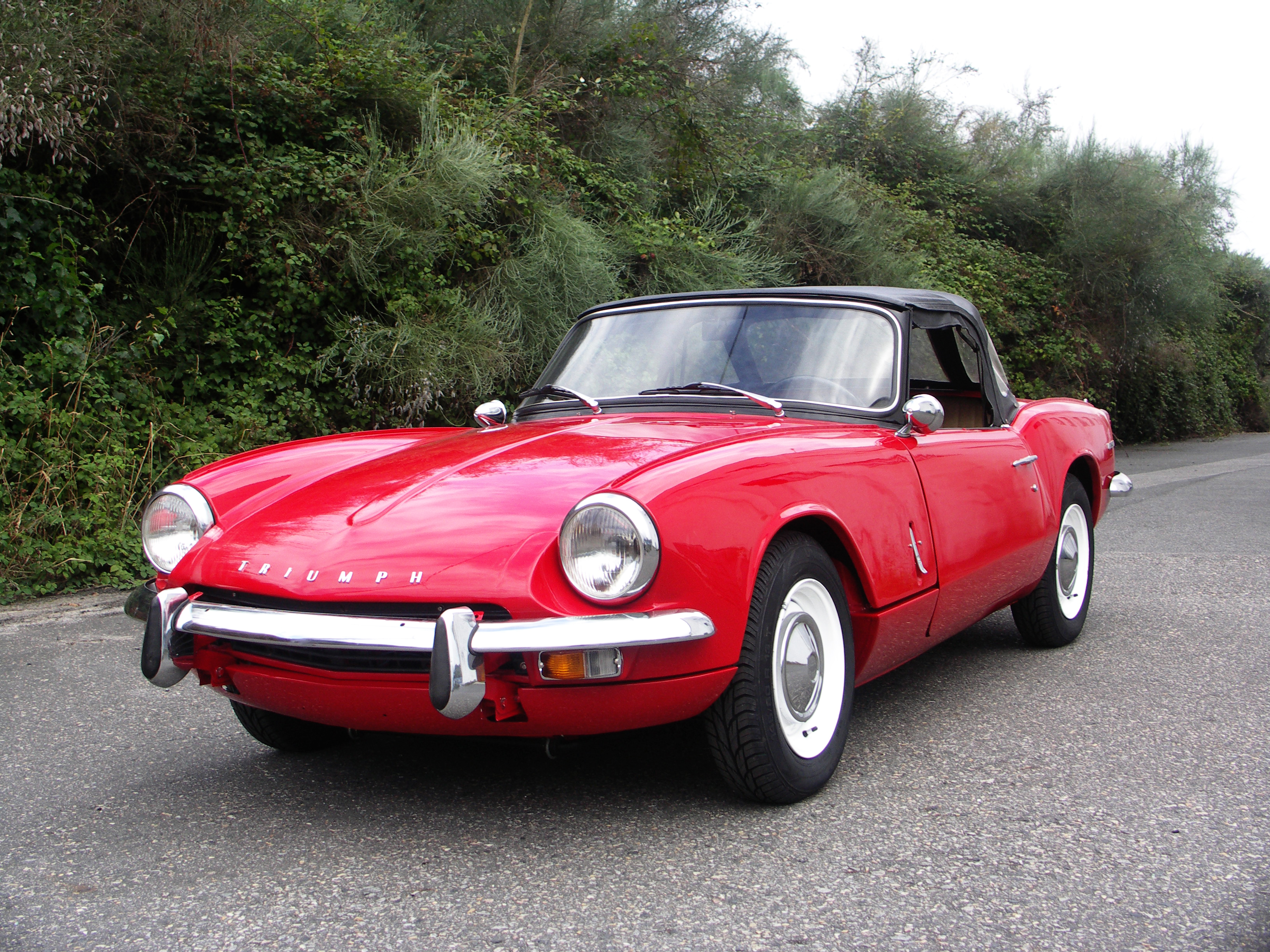
10. **The 1970 Triumph Stag: Bond’s British Convertible in Amsterdam**For the 1971 cinematic adventure *Diamonds Are Forever*, Sean Connery’s Bond temporarily traded his usual sleek rides for a distinctively British classic: a mustard-yellow 1970 Triumph Stag convertible. This stylish, drop-top grand tourer offered a charming, if brief, appearance, ferrying Connery through the picturesque, canal-lined streets of Amsterdam, providing a dash of local color to Bond’s international escapades.
The Stag in the film was actually owned by the diamond smuggler Peter Franks, who is famously nabbed at passport control while attempting to leave the UK. Connery’s Bond, ever the master of disguise and improvisation, assumes Franks’ identity, subsequently crossing the English Channel on a hovercraft before being seen behind the wheel of this quintessentially British machine in the Dutch capital.
While its screen time was fleeting, the Triumph Stag’s presence added an authentic touch of early 1970s British motoring to the Bond narrative. It perfectly embodied a certain era’s blend of sporty aspiration and comfortable cruising, offering audiences a glimpse into a more everyday, albeit still stylish, mode of transport for the world’s most famous spy. It underscored Bond’s ability to adapt to any situation, and any car, with effortless cool.
Interestingly, this very 007 Stag later made its way to a Christie’s auction in 1998, where it sold for a modest £20,700, approximately $33,000 at the time. This detail not only adds a fascinating historical footnote to the car’s cinematic legacy but also highlights how its value has appreciated significantly since, now being cherished by collectors who recognize its unique place in the extensive Bond automotive pantheon.
Car Model Information: 1972 Triumph Stag
Sp: uk
Caption: 1974 Triumph Stag (with after-market wheels)
Name: Triumph Stag
Production: 1970–1977,25,939 made
Manufacturer: Triumph Motor Company
Class: Sports tourer
Layout: Front-engine, rear-wheel-drive layout
Length: 173 in
Abbr: on
Width: 63.5 in
Weight: 2800 lb
Height: 49.5 in
Wheelbase: 100 in
Related: Triumph TR250,Triumph 2000
Engine: Triumph V8
Designer: Giovanni Michelotti
Categories: 1970s cars, All articles with unsourced statements, Articles with short description, Articles with unsourced statements from July 2018, British Leyland vehicles
Summary: The Triumph Stag is a 2+2 sports tourer which was sold between 1970 and 1978 by the British Triumph Motor Company, styled by Italian designer Giovanni Michelotti.
Get more information about: Triumph Stag
Buying a high-performing used car >>>
Brand: Triumph Model: Stag
Price: $11,999 Mileage: 63,159 mi.
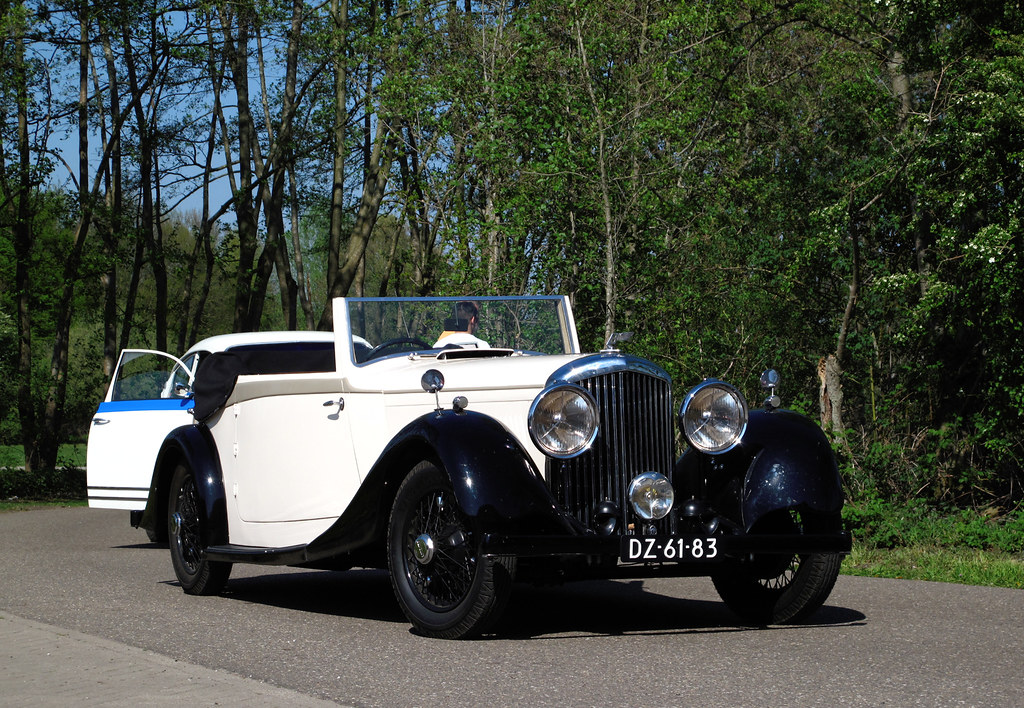
11. **The 1937 Bentley 4 1/4 Litre Drophead Coupé: A Nod to Bond’s Literary Roots**In his return to the role of 007 for the unofficial 1983 escapade *Never Say Never Again*, Sean Connery made a strikingly elegant entrance in a 1937 Bentley 4 1/4 Litre Drophead Coupé. This magnificent machine, featuring custom bodywork by England’s renowned Gurney Nutting coachbuilders, was a profound nod to Ian Fleming’s original literary vision of James Bond, who first drove a Bentley in the novel *Casino Royale*.
The 1937 Bentley, with its classic lines and bespoke craftsmanship, offered a glimpse into Bond’s traditional roots, a stark contrast to the more gadget-laden vehicles that had become synonymous with the character. Its brief cinematic appearance, with Connery arriving at the sophisticated Shrublands health clinic, exuded an aura of understated class and timeless British luxury, perfectly complementing the returning legend’s seasoned portrayal.
Under the hood, the 1935 model of a similar Bentley featured a 110 hp, straight-six engine, capable of reaching speeds of 90 mph, a respectable performance for its era. While the specifics for Connery’s 1937 model are not fully detailed in the context, the Bentley marque consistently delivered refined power and an unparalleled driving experience, perfectly suited for open-air drives in the country and impressing the ladies.
After its moment on the big screen, this distinguished Bentley was eventually restored, adding to its prestige and allure. It later found a new owner at a Bonhams auction in 2010, selling for a commendable $286,599. Its enduring value and appeal underscore its status as a significant piece of both automotive history and the rich legacy of Sean Connery’s Bond.
Car Model Information: 2021 Lexus GX 460 Base
Name: Bentley 4½ Litre
Caption: J Gurney Nutting & Co Limited,Chassis MF3155, Engine MF3155, Reg PH 9512,Weymann Fabric Bodies
Related: Blower Bentley (supercharged model)
Manufacturer: Bentley
Assembly: Cricklewood
Production: 1927–1931,(supercharged model from 1929),(720 units),2019–2020,(12 units)
Class: Sports car
BodyStyle: [object Object]
Layout: Front-engine, rear-wheel-drive layout
Predecessor: Bentley 3 Litre
Successor: Bentley Speed Six
Engine: {{convert,4.4,L,cuin,abbr=on,SOHC,straight-4
Transmission: manual transmission
Designer: Walter Owen Bentley
Wheelbase: Standard: {{convert,10,ft,10,in,mm,abbr=on
Abbr: on
Weight: 4½ Litre: {{convert,1625,kg,lb,abbr=on
Length: 4380 mm
Width: 1740 mm
Sp: uk
Categories: 24 Hours of Le Mans race cars, All articles containing potentially dated statements, All articles with unsourced statements, Articles containing potentially dated statements from 2013, Articles with French-language sources (fr)
Summary: The Bentley 4½ Litre is a British car based on a rolling chassis built by Bentley Motors. Walter Owen Bentley replaced the Bentley 3 Litre with a more powerful car by increasing its engine displacement to 4.4 litres (270 cubic inches). A racing variant was known as the Blower Bentley.
Bentley buyers used their cars for personal transport and arranged for their new chassis to be fitted with various body styles, mostly saloons or tourers. However, the publicity brought by their competition programme was invaluable for marketing Bentley’s cars.
At the time, noted car manufacturers such as Bugatti and Lorraine-Dietrich focused on designing cars to compete in the 24 Hours of Le Mans, a popular automotive endurance course established only a few years earlier. A victory in this competition quickly elevated any car maker’s reputation.
A total of 720 4½ Litre cars were produced between 1927 and 1931, including 55 cars with a supercharged engine popularly known as the Blower Bentley. A 4½ Litre Bentley won the 24 Hours of Le Mans in 1928. Though the supercharged 4½ Litre Bentley’s competitive performance was not outstanding, it set several speed records, most famously the Bentley Blower No.1 Monoposto in 1932 at Brooklands with a recorded speed of 222.03 km/h (137.96 mph).
Get more information about: Bentley 4½ Litre
Buying a high-performing used car >>>
Brand: Bentley Model: 4 1/4 Litre Drophead Coupé
Price: $44,105 Mileage: 50,292 mi.
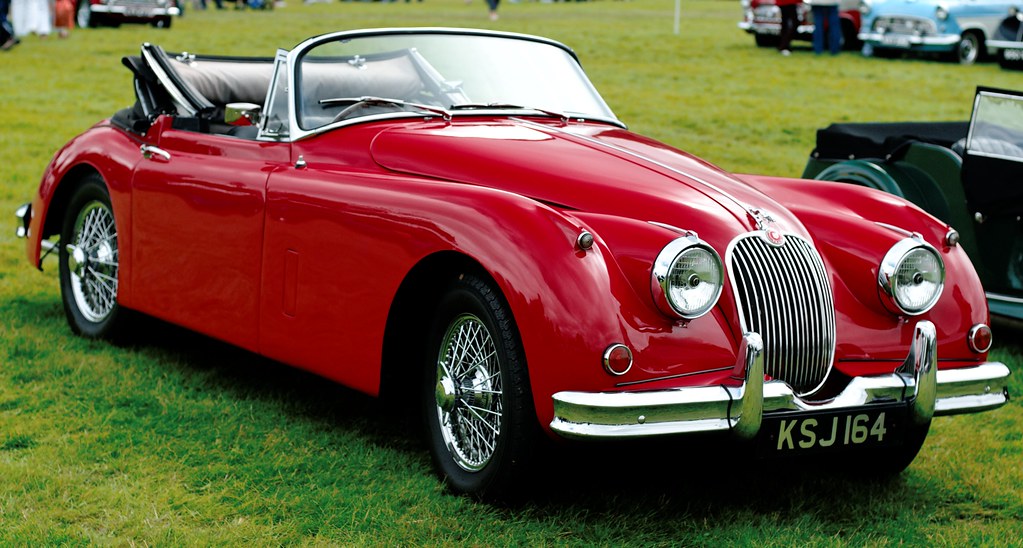
12. **The Jaguar XK150: A Personal Emblem of British Elegance**Among the exquisite machines in Sean Connery’s personal collection, the Jaguar XK150 stands as a classic car that profoundly embodies elegance and robust performance, much like the legendary actor himself. Produced between 1957 and 1961, the XK150 was the final iteration of Jaguar’s revered post-war sports cars, a testament to British engineering prowess and sophisticated design before the advent of the iconic E-Type.
Known for its sleek profile and formidable engine options, including powerful 3.4-liter and later 3.8-liter units, the XK150 delivered both exhilarating speed and luxurious comfort. This blend of dynamic capability and refined aesthetics made it an ideal match for Connery’s suave persona, seamlessly integrating with his appreciation for both the thrill of driving and the beauty of automotive artistry.
Connery, celebrated globally for his portrayal of James Bond, maintained a passion for luxury cars both on and off the screen. His ownership of the XK150 highlights his discerning taste for timeless, well-crafted vehicles that resonated with his charismatic legacy, even if it never featured in a Bond film. It spoke to a personal connection with British automotive heritage, reflecting his own origins and enduring cultural impact.
The Jaguar XK150, while often overshadowed by the cinematic star power of the DB5, perfectly complemented Connery’s lifestyle, offering a sophisticated driving experience. It remains a coveted collector’s item, its enduring charm and performance making it a fitting component of an icon’s esteemed collection, further cementing his reputation as a connoisseur of fine automobiles. Its estimated value stands at a respectable $150,000, a reflection of its classic allure.
---Front-3869660-2560x1440.jpg)
13. **The Mercedes-Benz 600: A Statement of Grandeur and Innovation**Sean Connery’s collection also featured the imposing Mercedes-Benz 600, a vehicle that, in its time, was an undeniable symbol of opulence and groundbreaking technological innovation. Produced from 1963 to 1981, this magnificent automobile, often affectionately known as the “Grosser” or “Grand Mercedes,” perfectly mirrored Connery’s own suave and sophisticated image, embodying a unique blend of powerful performance and luxurious comfort.
The Mercedes-Benz 600 was a pinnacle of engineering prowess for its era, celebrated for its advanced hydraulic systems that effortlessly operated everything from the windows to the seats, along with its state-of-the-art air suspension. These features ensured a ride of unparalleled smoothness and quiet dignity, making it a preferred choice among global celebrities, heads of state, and dignitaries who demanded the very best in automotive luxury.
Connery’s ownership of such a prestigious vehicle underscored his deep appreciation for fine craftsmanship and timeless design. It was more than just a car; it was a mobile statement of elevated taste and a testament to his enduring legacy as an icon of elegance. The Mercedes-Benz 600, with its commanding presence, allowed him to travel in the utmost style and comfort, reflecting a life lived with a keen eye for quality.
With an estimated value of $250,000, this Mercedes-Benz 600 remains a significant piece in the narrative of Connery’s automotive passions. It exemplifies his discerning eye for vehicles that were not only aesthetically pleasing but also represented the zenith of engineering achievement, solidifying his status as a true connoisseur of the world’s finest machines.

14. **The Bentley Continental: A Beacon of Refined Power**Sean Connery’s discerning eye for the finest automobiles naturally extended to the Bentley Continental, a classic vehicle that flawlessly encapsulated his sophisticated persona and profound appreciation for the luxurious side of motoring. This Bentley, often synonymous with unparalleled luxury and formidable performance, was an impeccably fitting choice for an actor whose on-screen elegance was matched by his off-screen charisma.
The Bentley Continental, with its sleek design and renowned craftsmanship, was far more than mere transportation for Connery; it was a compelling statement of style and refinement. It mirrored the quiet power and suave sophistication that he brought to his iconic roles, embodying a timeless elegance that transcended passing trends. The Bentley’s inherent class resonated deeply with Connery’s own cultivated image, making it a natural extension of his personal brand.
This particular Bentley model, whether it was the Continental GT or another variant, represented a pinnacle of automotive artistry, blending high-end materials with robust engineering to deliver an exceptional driving experience. It reflected a philosophy where quality, heritage, and an aspirational way of life converged, aligning perfectly with Connery’s reputation as a man who valued substance over transient flash.
With an estimated value of $200,000 for a classic Bentley Continental, Connery’s ownership of such a magnificent machine further underscores his profound appreciation for classic, timeless elegance. It is a vehicle that speaks volumes about a lifestyle curated with meticulous attention to detail and an unwavering commitment to quality, truly capturing the essence of a man whose legacy continues to inspire generations.
Car Model Information: 2024 Bentley Continental GT V8 Edition 8
Name: Bentley Continental GT
Manufacturer: Bentley
Layout: F4 layout
Production: 2003–present
Assembly: Crewe
Class: Grand tourer
BodyStyle: fastback,coupé
Sp: uk
Categories: 2010s cars, 2020s cars, All-wheel-drive vehicles, All articles to be split, Articles to be split from February 2022
Summary: The Bentley Continental GT is a grand touring car manufactured and marketed by the British company Bentley Motors since 2003. The Continental GT is offered as a two-door coupé or convertible, with four seats. It was the first new Bentley released after the company’s acquisition by Volkswagen AG in 1998, and the first Bentley to employ mass production manufacturing techniques. It was later joined by the Bentley Continental Flying Spur, a four-door saloon car variant.
Get more information about: Bentley Continental GT
Buying a high-performing used car >>>
Brand: Bentley Model: Continental
Price: $224,950 Mileage: 3,117 mi.
From the quiet dignity of a BMW in Marbella to the powerful roar of a Bentley, Sean Connery’s automotive legacy is as rich and varied as his celebrated filmography. Each car, whether a cinematic co-star or a cherished personal possession, contributed to the tapestry of a life lived with extraordinary style and an unwavering appreciation for the finest engineering. His collection wasn’t just about owning prestigious vehicles; it was about curating a lifestyle, a statement that these magnificent machines echoed with every polished curve and powerful engine note. Indeed, Connery’s cars are not merely objects of desire; they are enduring symbols of a true icon, forever linked to the man who made them famous, and forever driving his legend forward.

